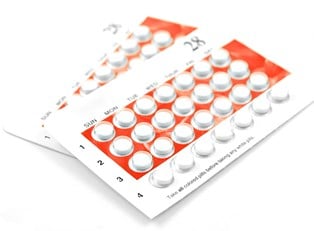The key to preventing an unwanted pregnancy is using the right method of birth control. Today, there are a plethora of highly-effective birth control methods available. Birth control information can help a couple decide the best method for their lifestyle. The Pill, the patch, vaginal ring, condoms, spermicide, Intrauterine device, the rhythm method and sterilization are some of the most commonly used birth control methods.
Birth Control Pills
Birth control pills made their debut back in the 1960s. These pills have changed greatly since then, but they still are one of the most-trusted forms of contraception. Birth control pills work by tricking the body into thinking that it is already pregnant by stopping ovulation. Some birth control pills contain estrogen and synthetic progestin (which is synthetic progesterone), but some of the newer pills only have progestin. There are many benefits that can come from taking birth control pills.
Birth control pills have been shown to reduce menstrual cramping, acne and migraines. There has also been evidence to suggest that these pills can reduce the risk of ovarian cancer. However, studies have also shown that women who take birth control pills are at an increased risk for developing blood clots and having a stroke. It is important to note that the chance of having an adverse reaction to birth control pills is low and the chance is even lower with progestin - only birth control pills. The patch and the vaginal ring work virtually the same as the pill. The patch can be placed anywhere on the body and has to be replaced every week. The vaginal ring is inserted into the vagina and can be worn for three weeks. Women who perfectly use hormonal birth control methods have about a 1 percent chance of getting pregnant each year. Those who typically use birth control pills have about a 8 percent chance of getting pregnant each year.
Condoms
Condoms have been around since the 19th century, which makes them one of the oldest forms of contraception there is. Condoms are a barrier method that work by blocking the sperm from entering the vagina. An advantage of using condoms is there are virtually no side effects, unless one partner is allergic to latex. Additionally condoms are the only form of contraception that offer protection against HIV and sexually transmitted diseases. Couples who use condoms every time that they have sex have about a 2-3 percent chance of getting pregnant each year. Those who typically use condoms have about a 10-18 percent chance of getting pregnant. Spermicide, which is a substance that kills sperm, may increase the effectiveness of condoms.
Intrauterine Device
The intrauterine device is a device that is placed in the uterus to prevent pregnancy. This method made its debut back in the 1970s, which makes it one of the newest birth control types. An advantage of this method of birth control is that it can prevent pregnancy for up to ten years. The intrauterine device can also reduce heavy menstrual flow. Side effects of the IUD are minor and may include spotting and mood swings. When the IUD is perfectly used, the chance of getting pregnant each year is less than 1 percent. Many couples choose to use the rhythm method. The rhythm method is a form of contraception that involves closely monitoring the woman's menstrual cycle and avoiding sex during the days that she ovulates. Some studies suggest that this form of contraception is up to 99 percent effective, but health care experts suggest using an alternative form of birth control. Couples who do not want children anymore can also opt for male or female sterilization.



